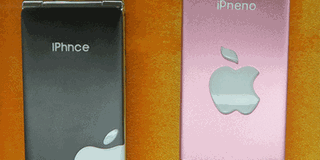'Made In China' does not necessarily mean fake

Fake iPhones on display. Because most gadgets like these have Made in China on them, very many people conclude that everything produced in China is fake, which is not the case. Internet Photo.
What you need to know:
The term 'Made in China' has become synonymous with fake products over the years. But this is a prejudice that needs to change.
One of the most resilient myths about consumer electronics on the market suggests that products manufactured in China are of lesser standards compared to those manufactured in, let us say, US, Japan or Europe.
This myth dates back to the time when Europe and other markets were overrun by the first wave of consumer electronics from China that started in the early 90’s—very cheap devices in plain plastic bodies that very often had famous brand names on them.
No one was expecting quality and the only perk they had was the price. I must add that even if the Chinese wanted to produce quality stuff then, they would have failed. Back then, China did not have the necessary technologies like production lines or the expertise including engineers and designers.
But in a decade, China made a breakthrough in quality and quantity. By creating a free economic zone, China has managed to attract virtually all consumer electronics manufacturers from around the world with the availability of cheap labour and financial privileges. Today, European, American and even Japanese manufacturers like Sony, HP, Dell and Apple operate in China for reasons mentioned above. The result is that as far as one brand is concerned, Sony, for example, there is absolutely no difference where the products are manufactured, the quality is the same. It is achieved by simply following the thoroughly tested production line manuals and use of competently trained staff.
The goal of any manufacturer is to follow the quality standard regardless of the factory. Moreover, all the parts of a single device are all the same at any factory with almost no exceptions.
All this allows you to create identical products and quality issues usually arise due to improper factory quality control or faulty production lines and very often the ever-present human factors. The vast majority of the production of electronics parts is outsourced to contract manufacturers operating in so-called low cost countries and of course, China takes a lead.
Quality depends on manufacturer not country of origin
Many are fixated on the “Made in China” stereotype and they associate everything Chinese with the devices that used to break down immediately after the purchase. This attitude has been changing very slowly in the recent years.
You should always draw a line between Chinese products manufactured by major international companies like Sony and Apple that guarantee quality, and the tiny Chinese cottage industry, which manufactures anything from four-sim card phones to radio watches. Both are Chinese and will have Made in China on their products but the quality will differ significantly.
Nonetheless, because of the thriving manufacturing industry in China, it is not difficult for anyone with the right machinery to open up a production line and make knock-off electronics that are of poor quality with popular brand copying. These items are usually miles away, in terms of the price difference, with the real thing. And this is what exactly pushes up their demand.
I must add that these items are not always a bad thing, so long as you know what you are getting. See, China is a land of endless factories—with many pumping out the world’s most desirable gadgets, from iPhones to portable computers to digital cameras and much more. Plenty of other goods, both electronic and otherwise, are routinely copied in China.
The most common on the Ugandan market are the phones, specifically known as Chinese phones. Manufacturers of these phones have interesting marketing strategies that are quite simple.
They copy the designs and brand names. For instance, you shall come across things like Sumsung for Samsung or Nckia for Nokia. Some are bold enough to print Nokia on the phone, using a different font. This has now changed and you shall see generic logos. It might look like a Sony Ericsson, or Apple’s latest, but turn it on and you will hear a strange Chinese techno ringtone. Turn on the 8-Megapixel phone camera, take a photo, and see something of a 0.5-Megapixel quality. Then scroll through the operating system and you shall shockingly find English grammar and spelling mistakes and the worst case scenario is some parts of the operating system being in Chinese.
Why fake products thrive
The biggest selling point for most of these fake phones is the price in contrast to the intended use. There prices are more often than not way lower than the real thing that they are a compelling choice for many buyers who just want to make a phone call. It is significantly important that awareness of fake phones be raised, as it can be very difficult for buyers to tell the difference between a fake and genuine product.
The quality of fakes has reached the point where many buyers will assume they have the real thing. They sometimes look, feel and behave like the real thing right down to start up sequences and graphics. We all ought to raise a glass to Uganda Communications Commission for their recent declaration of war on these kinds of phones and by logical extension to other fake electronics that have been flooding the market.
That said, keep in mind that the Made in China stamp does not necessarily mean it is of any less quality than that made from elsewhere.
Spotting the fakes
With the influx of genuine-looking fake gadgets hitting the market, here are a few tips that might just helping you spot the fakes;
• Packaging: Check the packaging to make sure it is in good condition. Also, make sure the batch number on the packaging is the same as that on the product.
• Colours: Check packaging and products for colour consistency, and depth. Quality is key.
• Spellings: Check for misspellings or bad English, grammar etc, on manuals or labels.
• Labels: Fake electronics don’t often have inner labels. When they do, these scratch off easily.
• Price: If it’s so cheap you can’t believe it, then it probably is fake. Research on the current market price and if the price being offered is nowhere close to it, then it might be fake.
(Tech News Daily)




